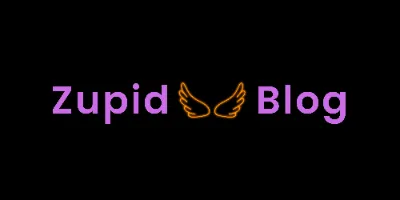How to Handle "Situationships" in the Age of Casual Dating
In today’s digital world, where dating apps are just a swipe away and casual connections are often the norm, the concept of a "situationship" has emerged as a common experience, especially for Gen Z. It’s that phase where you're more than friends but not quite in a full-blown relationship—an undefined, often ambiguous middle ground. Situationships have become a natural part of modern dating culture, but they can leave people feeling confused, frustrated, and unsure about where they stand.
So, how do you navigate this uncertain territory without losing your sense of self or getting emotionally tangled? Here’s a guide to understanding and handling situationships in the age of casual dating.
What is a Situationship?
A situationship is essentially a romantic relationship that lacks clear labels, commitment, or any official status. It’s a connection that can range from regular texting, casual dates, and occasional physical intimacy, but without the expectations or responsibilities that come with a defined relationship. It’s something that might start off innocently as friends with benefits or a casual fling but can easily get complicated over time when feelings start to grow, or boundaries become unclear.
For Gen Z, situationships often emerge in an era where dating apps and instant messaging make it easy to connect with someone without ever having a formal, face-to-face conversation about what you both want. This leaves many wondering: Are we dating? Are we exclusive? Or is this just... something else?
Why Are Situationships So Common?
There are several factors contributing to the rise of situationships:
Casual Attitudes Towards Dating: With Gen Z's relaxed approach to relationships and a focus on personal growth and career, there’s less pressure to settle down quickly. Many are choosing to date without immediately committing, seeing what develops over time.
Fear of Labels: The pressure of traditional relationship labels often feels suffocating to some. The pressure to define the relationship with the "boyfriend/girlfriend" title can feel like too much too soon. So, instead, people opt for something more fluid—something undefined.
Online Dating Culture: With dating apps at the forefront of modern romance, people are often swiping through profiles without thinking about what they want beyond the next match. It’s easy to get stuck in the flow of casual interactions that never evolve into a solid relationship.
Social Media Influence: In a world where everything is documented and shared, committing to one person can feel like giving up potential connections elsewhere. Social media’s highlight reels can also create a fear of missing out (FOMO) and hesitation in settling down.
The Pros and Cons of Situationships
Like everything in dating, situationships come with both positives and negatives.
Pros:
No Pressure: There’s less pressure to conform to relationship expectations or timelines.
Freedom: You have the freedom to explore and grow without feeling restricted.
Casual Connection: If you're not looking for something serious, a situationship offers companionship and intimacy without the strings attached.
Cons:
Confusion: The lack of clear boundaries can lead to misunderstandings about feelings, intentions, and expectations.
Emotional Attachment: It’s easy to get emotionally attached to someone, and situationships can create pain when one person wants more and the other doesn’t.
Unmet Expectations: Without communication, one person might expect exclusivity while the other is content with keeping things casual.
How to Handle a Situationship
Communicate Your Needs: If you’re starting to feel more attached or want clarity, it’s important to talk about it. Have an honest conversation about where both of you stand and what you want. Avoid assuming that the other person feels the same way. Being upfront about your needs can prevent confusion later on.
Set Boundaries: Situationships can quickly become emotionally draining if boundaries aren’t clear. Decide for yourself what you’re comfortable with and communicate that to your partner. This might include when and how often you see each other, what behaviors are acceptable, and whether or not you’re open to seeing other people.
Assess Your Feelings: Ask yourself: Are you emotionally invested in this person? Do you want something more than just a casual connection? Being aware of your own feelings can help you decide whether you want to continue the situationship or move on.
Avoid Overthinking: It’s easy to get caught up in the grey areas of a situationship, but overthinking can lead to unnecessary stress. Focus on the present moment and enjoy the connection for what it is, without forcing it into something it’s not.
Know When to Let Go: If the situationship isn’t fulfilling your emotional needs, or if you feel like you’re not on the same page, it’s okay to walk away. Recognize that not every connection has to turn into a long-term relationship. It’s better to move on than stay stuck in something that doesn’t feel right.
When Is It Time to Upgrade the Situationship?
If you’ve been enjoying your connection but feel like you’re both ready for something more, it may be time to upgrade from a situationship to a more formal relationship. A healthy relationship requires transparency, commitment, and mutual respect. If both partners are on the same page about wanting something serious, it’s time to have that conversation and decide where to take things next.
In Conclusion
Situationships are a byproduct of the modern, digital-first dating culture. While they offer freedom and flexibility, they can also lead to confusion and emotional turmoil if not handled with care. As a Gen Z dater, it’s important to communicate your feelings, establish boundaries, and be honest with yourself and your partner about what you want. Whether it’s a casual fling or a step towards a committed relationship, the key is to navigate the grey areas with clarity and intention.
Remember, dating is about finding what works for you—and if a situationship no longer feels right, it’s okay to move on and look for a connection that aligns with your values and desires.







